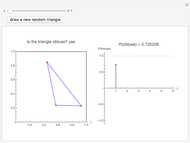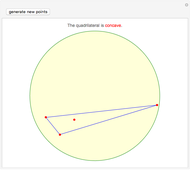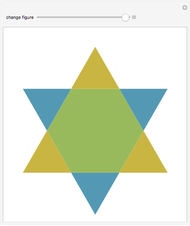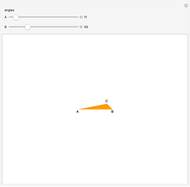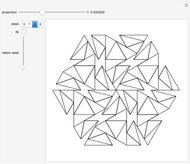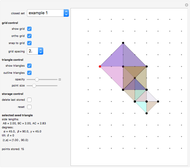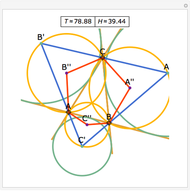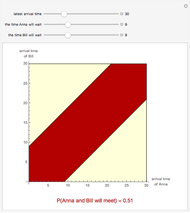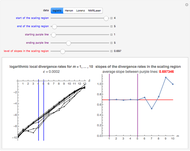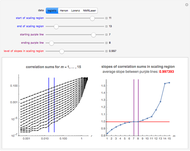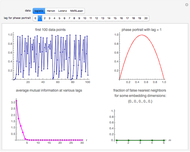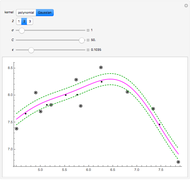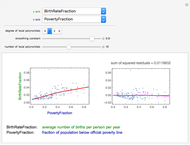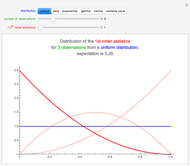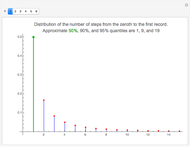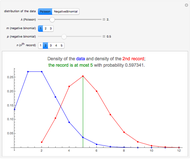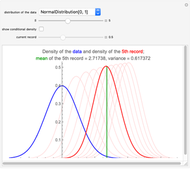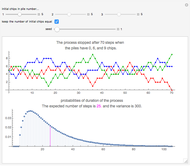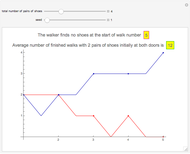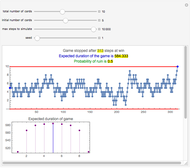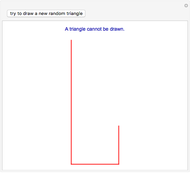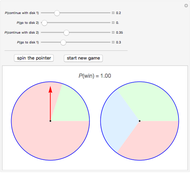Obtuse Random Triangles from Three Parts of the Unit Interval

Requires a Wolfram Notebook System
Interact on desktop, mobile and cloud with the free Wolfram Player or other Wolfram Language products.
Two points are chosen at random in the unit interval. From the resulting three parts, we try to form a triangle. If a triangle can be formed, we are interested in whether it is obtuse or not. It is known that a triangle can be formed with probability 1/4. An obtuse triangle can be formed with probability  ≃
≃  . If a triangle can be formed, it is obtuse with probability
. If a triangle can be formed, it is obtuse with probability  ≃
≃  .
.
Contributed by: Heikki Ruskeepää (August 2013)
Open content licensed under CC BY-NC-SA
Snapshots
Details
Snapshot 1: Only one-quarter of the experiments result in a triangle. This snapshot shows a typical example where a triangle cannot be formed: one of the three parts is longer than the sum of the lengths of the other two parts.
Snapshot 2: Here is another example where a triangle cannot be formed.
Snapshot 3: If a triangle can be formed, it is obtuse with quite a high probability (0.682).
Snapshot 4: Approximately one-third of the cases where a triangle can be formed are such that the triangle is not obtuse.
The probability that the random triangle is obtuse is calculated in [1]. The problem is also considered in [2, pp. 31–32].
In another Demonstration, we consider the related problem of generating random triangles in a rectangle; see the Related Links.
References
[1] M. G. C. Holterman, "Solution of Problem 858: Probability of an Obtuse Triangle," Mathematics Magazine, 46(5), 1973 pp. 294–295.
[2] P. J. Nahin, Digital Dice: Computational Solutions to Practical Probability Problems, Princeton, NJ: Princeton University Press, 2008.
Permanent Citation
"Obtuse Random Triangles from Three Parts of the Unit Interval"
http://demonstrations.wolfram.com/ObtuseRandomTrianglesFromThreePartsOfTheUnitInterval/
Wolfram Demonstrations Project
Published: August 27 2013







